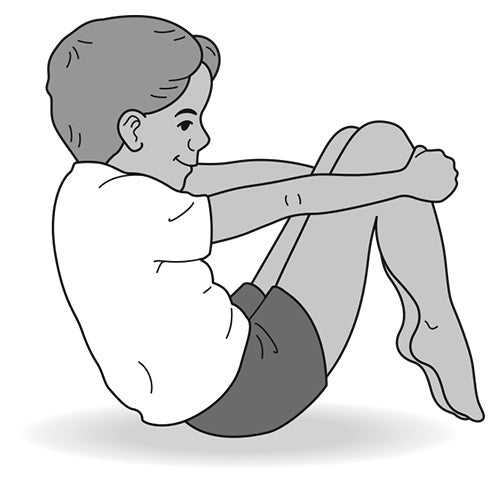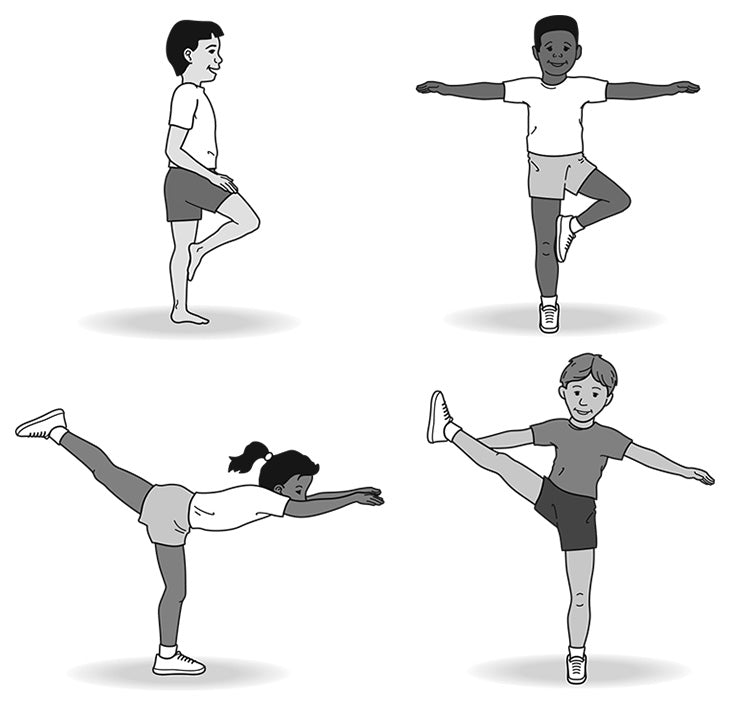Exploring Bases of Support and Clarifying a Good Gymnastic Balance
This is an excerpt from Educational Gymnastics for Children by Tina J Hall,Shirley Holt/Hale.
| Learning experiences | Teaching tips |
|
The base of support is the part or parts of your body that touch the floor and hold you in a balance.
Our positions now are not gymnastic balances. To be a gymnastic balance, you must challenge yourself beyond typical daily body positions such as sitting, standing, and lying down. |
Use as an introduction to the learning experiences before sending students to personal space.
|
In your sitting position, grasp your knees with your arms and raise your feet just off the floor. Your base of support is now your seat only; this is a gymnastic balance. Today you are going to explore different body parts that can serve as bases of support for gymnastic balances. |
See figure 5.1. |
|
In personal space, see how many different body parts can serve as your base of support. You will combine body parts and remain still for three to five seconds. After three to five seconds, try a new one. If you cannot maintain stillness after a few attempts, explore another option. For safety reasons, do not include your head as a base of support and do not try to balance on just hands. |
While students are exploring, walk around and make note of the different bases you observe. Share examples of bases of support you observed. List them on whiteboard or display on screen. Add additional ones that serve as good bases. |
|
Now, I will name the base of support, and you will create the balance. Focus on stillness for three to five seconds; no wiggles, no wobbles. Let’s start with one foot. Look around; almost everyone looks the same. Create a balance on one foot that is different. Explore as many ways to balance on one foot as you can hold still for three to five seconds. |
Pinpoint what you see to encourage variety. See figure 5.2. |
|
Listed on the board (or screen) are bases of support I observed when I watched you work. Practice to see how many ways you can balance using the base of support I read from our list. After three to five seconds of stillness, try another way to balance on that base of support.
|
Use the examples provided and others that you observed. |


SHOP

Get the latest insights with regular newsletters, plus periodic product information and special insider offers.
JOIN NOW


